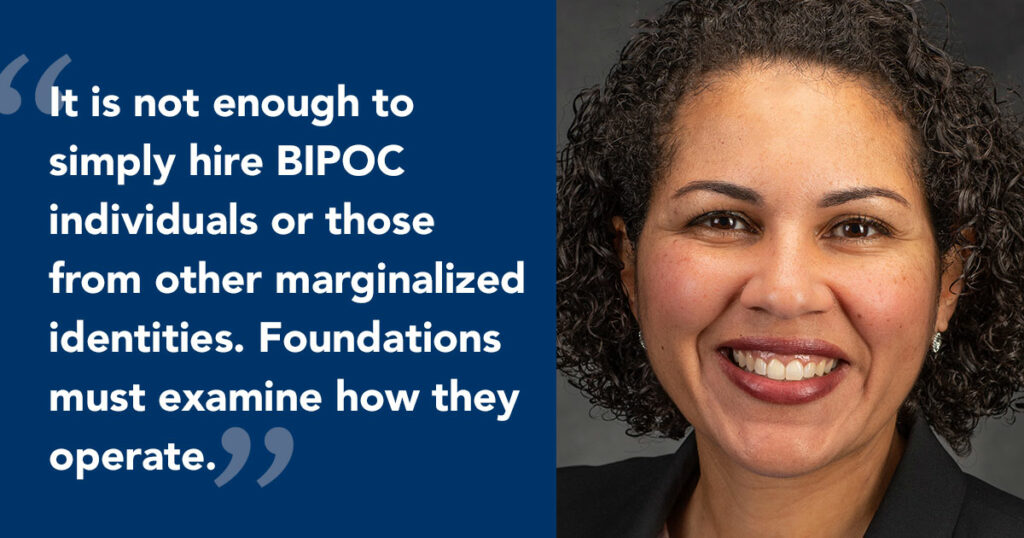Blog
“Foundations Must Examine How They Operate” Diana Tate Vermeire on Building a More Equitable Philanthropic Sector

How can we truly foster diversity, equity and inclusion in philanthropy? Schott’s Senior Vice President of Strategy Diana Tate Vermeire makes the case for organizations to critically examine the entirety of their internal culture, practices, priorities and make bold changes.
August is Black Philanthropy Month. Given how much of the wealth within the sector can be traced to slavery and Native dispossession, how should funders bring an understanding and reckoning with the past into our present work?
We often want to disregard or forget those portions of our past that bring us shame or pain. Yet, we must understand our historical roots to inform how our present work can be aligned with our values. When we say we want to ensure equity, we cannot disregard the decades or centuries we have operated in inequitable – or even oppressive – ways that serve only some in our community. Instead, we have to examine our prior actions to ensure that our current decisions move us toward rectifying systemic and pervasive harms. Such an approach centers comprehensive data – not necessarily only hard numbers, but also qualitative data – to guide what should be the funding priorities to achieve the goals that we have set.
You have extensive experience in diversity, equity and inclusion work in higher education. Like philanthropy, higher education staff, especially faculty, are disproportionately white. What do you see as important strategies to foster racial equity that apply to foundations?
If foundations seek to foster racial equity within their organizations, they need to attend to their organizational culture in its entirety. It is not enough to simply hire BIPOC individuals or individuals from other marginalized identities. Foundations must examine how they operate and take actions to ensure that individuals are able to bring their full selves – experiences, perspectives, and expertise – to their roles within organizations. Moreover, foundations must examine their systems and operations to ensure they counteract the well-documented ways traditional hiring practices allow implicit bias to persist. Decision-making processes should be examined to ensure that they draw on a wide range of expertise, consider varied perspectives, and create clarity for how the process aligns to organizational values. Most importantly, foundations need to realize that this is iterative, ongoing work that deserves a great deal of attention, even if it will never quite be done.
ABFE president and Schott board member Susan Taylor Batten has said that “We need to focus on our people, but we also need to focus on our work.” What is the relationship between racial equity in hiring and racial equity in grantmaking?
I believe that racial equity and racial justice require us to comprehensively examine the systems in which we operate. For me, racial equity in hiring and racial equity in grantmaking go together. We must ensure that the people who work in philanthropy, who are responsible for making big decisions, but also smaller ones that simply open doors, reflect our larger society and community. It is when we focus on our people that we bring a wide range of perspective, thought, experience, and expertise to the decision-making table, which ultimately leads to better, more creative, and impactful decisions. Susan Taylor Batten is right that we will not achieve the results we seek without focusing on our work. We must examine all levels of the grantmaking process and access to understand how these systems either advance or hinder equity and justice. We must then also have the courage and creativity to take the necessary steps to change our practices to ensure that our people and our work make apparent our commitment to racial equity.


